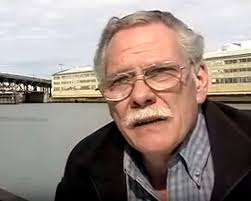by Hays Swinney
Five years ago, when I started at Forterra (formerly Cascade Land Conservancy), Pieter Bohen, then Stewardship Director, was excited to show me one of the properties I would soon become intimately involved with, the Duwamish Hill Preserve. He described it to me, with unwavering enthusiasm, as an 8.5-acre preserve on the Duwamish River, ecologically, culturally and geologically significant, truly a gem. I couldn’t wait to see it. What he’d forgotten to mention, however, is that it was a diamond in the rough, and I mean rough.
What I saw on my first visit was a hill of invasive Scots broom and Himalayan blackberry; piles of garbage dumped decades ago including rusted car bodies, mattresses, and tires; and, rutted trails created by ORV’s all over the property. The very active police firing range just to the north added to my awareness of the fact that this property is in the middle of a heavily industrialized area.
Why would anyone want to preserve this property?
As I learned the story and got to know the place, I began to understand the answer to that question.
In 2001, the Hill was slated to be dynamited to make room for more industry. Recognizing the potential of this place, a group of community members banded together to form the Friends of the Hill and together with the Cascade Land Conservancy and the City of Tukwila worked tirelessly over the next three years to preserve the site. In March of 2004, the property was successfully acquired and is now owned by the City of Tukwila.
A lot has happened in the intervening years.
Right away, small groups of volunteers began to hold work parties to begin to chip away at the invasives and the garbage. In 2006, a master planning process engaged the local community in envisioning what the Hill might become for the City of Tukwila and the region. The community focused on how to highlight the unique elements of this place and how to provide an experience for visitors worthy of the cultural and ecological significance this site holds.
The Hill is an unusual outcropping of bedrock rising above the Duwamish River that precedes the glaciers of the last ice age. It is culturally significant for its association with southern Puget Sound Salish oral tradition and history, as a key location in the stories collectively known as the “Epic of the Winds.” Ecologically, a large portion of the Hill historically supported a unique rocky bald habitat – a habitat which occurs on exposed slopes with shallow soils that commonly support mosses, lichens and a significant diversity of herbaceous plants. Community members wanted to create an educational resource, recognizing the opportunity to use the Hill as a place to learn about topics ranging from watershed science and restoration to archaeology and ethnobotony.
With the completion of the Master Plan in May of 2007, work began in earnest on the Hill to achieve the community’s vision. What had been work parties of 6-10 people grew to regular work parties of 25 or 60 volunteers. Soon hundreds of volunteers had logged thousands of hours removing invasives and replanting natives. Rutted paths have been converted to formal trails. An outdoor classroom has been created in the heart of the Hill, and small gathering areas afford views from the Seattle skyline to Mt. Rainier. The Hill is starting to look a lot different.
I also fell in love with the place for all of its uniqueness. Had I only visited it that first time, I never would have loved it the way I do now having seen it on its way to reaching all of the potential that motivated the Friends of the Hill to fight for its preservation.
Join Forterra, the City of Tukwila and Friends of the Hill at the Duwamish Alive! volunteer event at the Hill on April 21, 2012 to help in the ongoing stewardship of this special place.
By Hayes Swinney
Land Stewardship Director

